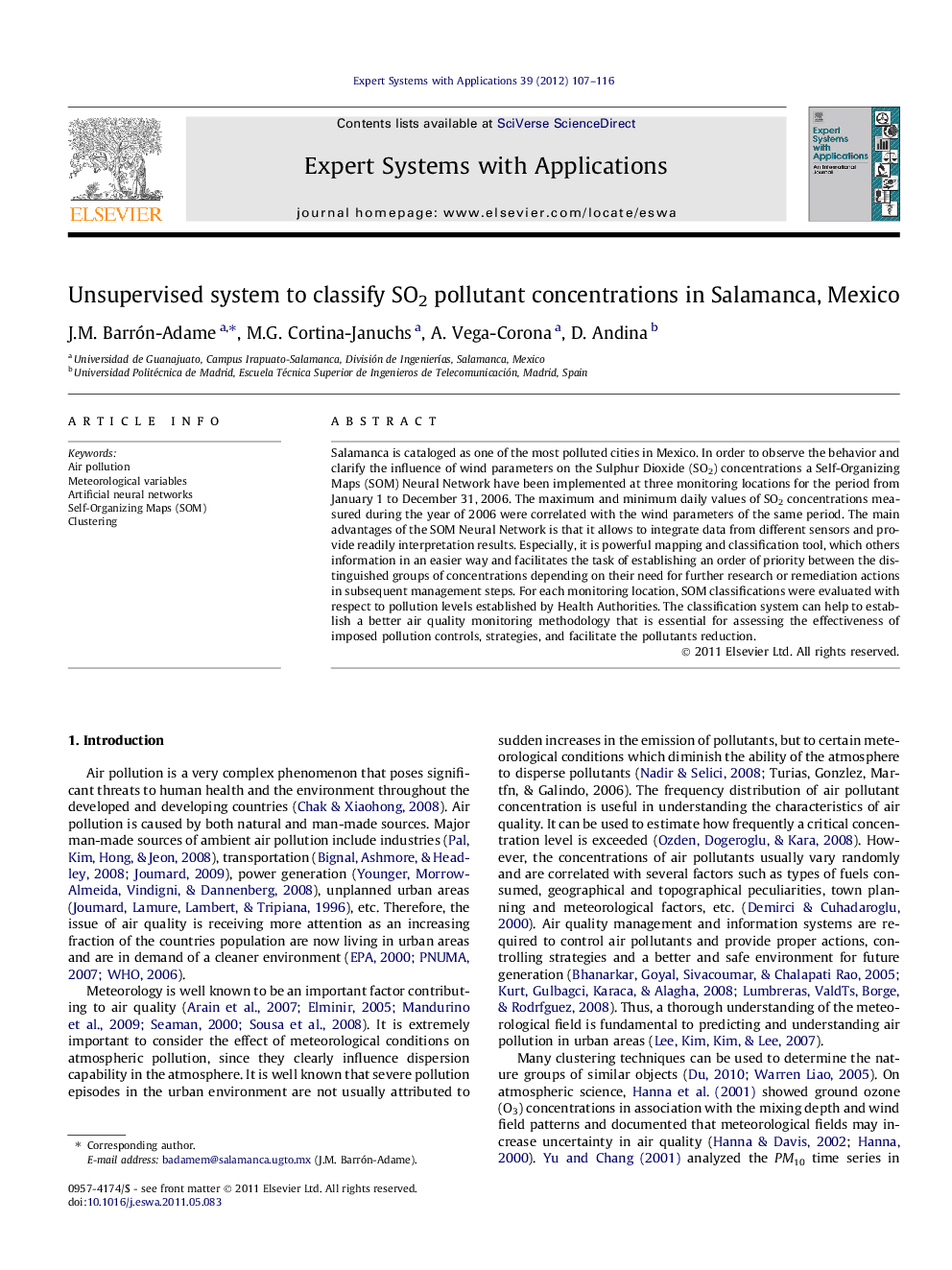| Article ID | Journal | Published Year | Pages | File Type |
|---|---|---|---|---|
| 388264 | Expert Systems with Applications | 2012 | 10 Pages |
Salamanca is cataloged as one of the most polluted cities in Mexico. In order to observe the behavior and clarify the influence of wind parameters on the Sulphur Dioxide (SO2) concentrations a Self-Organizing Maps (SOM) Neural Network have been implemented at three monitoring locations for the period from January 1 to December 31, 2006. The maximum and minimum daily values of SO2 concentrations measured during the year of 2006 were correlated with the wind parameters of the same period. The main advantages of the SOM Neural Network is that it allows to integrate data from different sensors and provide readily interpretation results. Especially, it is powerful mapping and classification tool, which others information in an easier way and facilitates the task of establishing an order of priority between the distinguished groups of concentrations depending on their need for further research or remediation actions in subsequent management steps. For each monitoring location, SOM classifications were evaluated with respect to pollution levels established by Health Authorities. The classification system can help to establish a better air quality monitoring methodology that is essential for assessing the effectiveness of imposed pollution controls, strategies, and facilitate the pollutants reduction.
► SO2 pollutant concentrations, Wind Direction (WD) and Wind Speed (WS) meteorological variables are classified in order to predict the pollution behavior. ► To classify the pollutant concentrations and meteorological variables, Self-Organizing Maps were implemented. ► Official pollution levels classification, established by Health Authorities are taken as references to select the best SOM.
